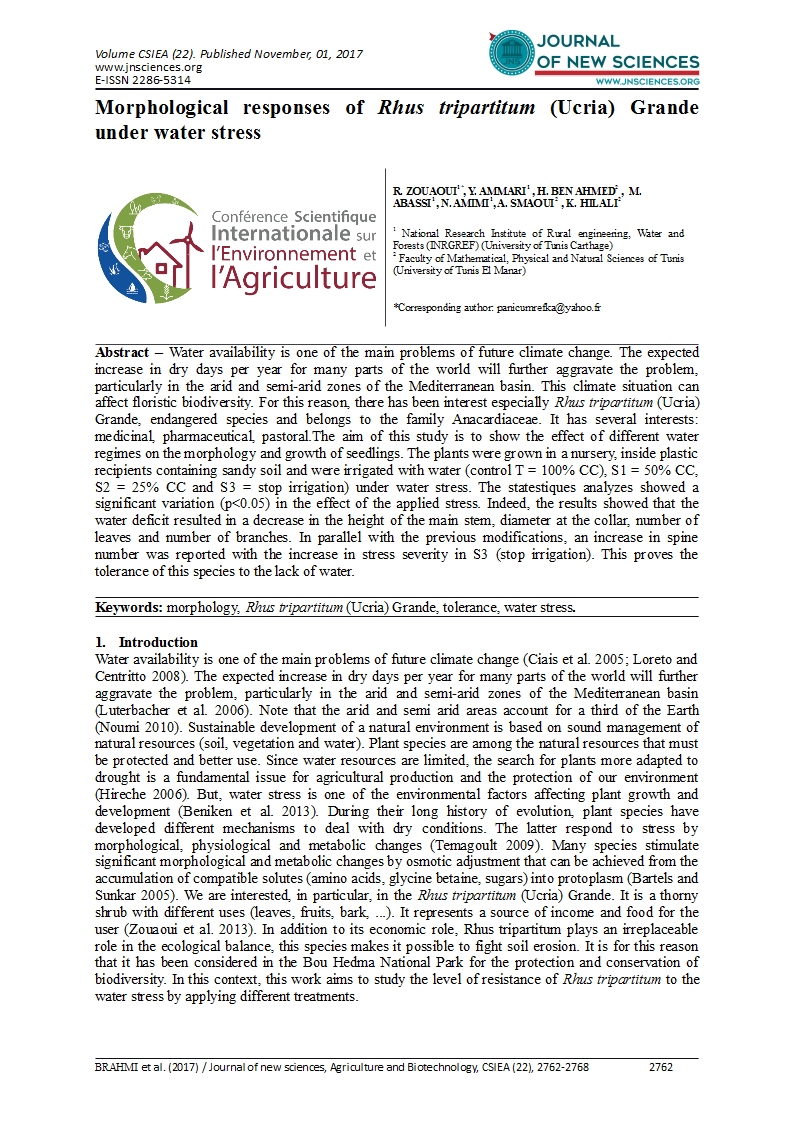

- Category: Volume spécial (Conférence CSIEA 2017)
- Hits: 11506
Morphological responses of Rhus tripartitum (Ucria) Grande under water stress
|
|
R. ZOUAOUI1*, Y. AMMARI1 , H. BEN AHMED2 , M. ABASSI1 , N. AMIMI1, A. SMAOUI2 , K. HILALI2
1 National Research Institute of Rural engineering, Water and Forests (INRGREF) (University of Tunis Carthage) 2 Faculty of Mathematical, Physical and Natural Sciences of Tunis (University of Tunis El Manar)
|
Abstract – Water availability is one of the main problems of future climate change. The expected increase in dry days per year for many parts of the world will further aggravate the problem, particularly in the arid and semi-arid zones of the Mediterranean basin. This climate situation can affect floristic biodiversity. For this reason, there has been interest especially Rhus tripartitum (Ucria) Grande, endangered species and belongs to the family Anacardiaceae. It has several interests: medicinal, pharmaceutical, pastoral.The aim of this study is to show the effect of different water regimes on the morphology and growth of seedlings. The plants were grown in a nursery, inside plastic recipients containing sandy soil and were irrigated with water (control T = 100% CC), S1 = 50% CC, S2 = 25% CC and S3 = stop irrigation) under water stress. The statestiques analyzes showed a significant variation (p<0.05) in the effect of the applied stress. Indeed, the results showed that the water deficit resulted in a decrease in the height of the main stem, diameter at the collar, number of leaves and number of branches. In parallel with the previous modifications, an increase in spine number was reported with the increase in stress severity in S3 (stop irrigation). This proves the tolerance of this species to the lack of water.
Keywords: morphology, Rhus tripartitum (Ucria) Grande, tolerance, water stress.

